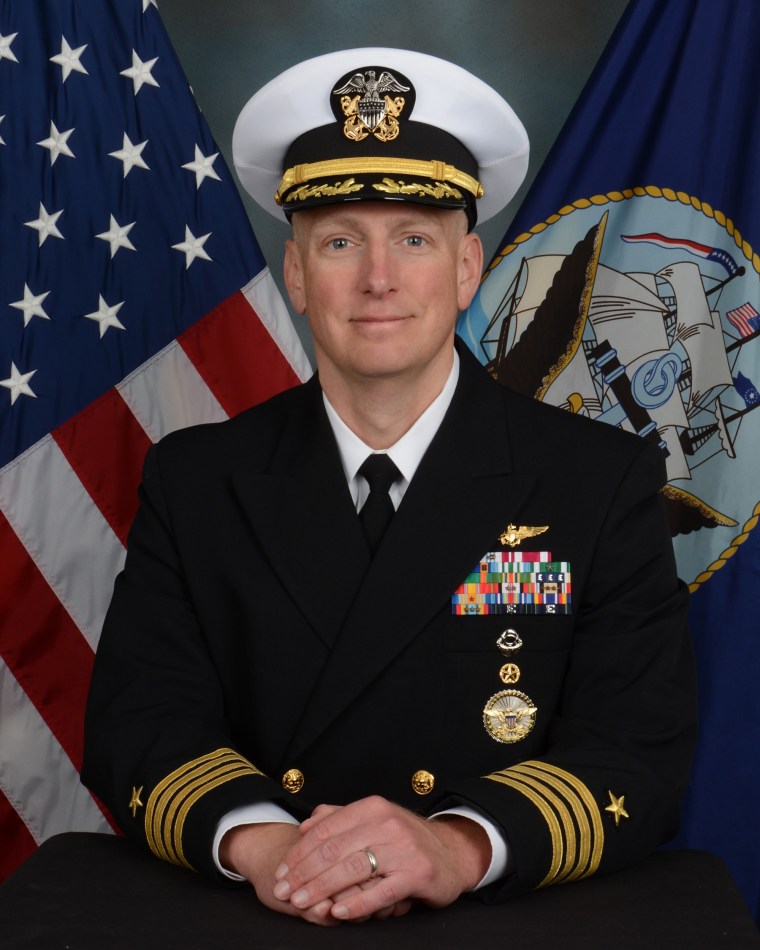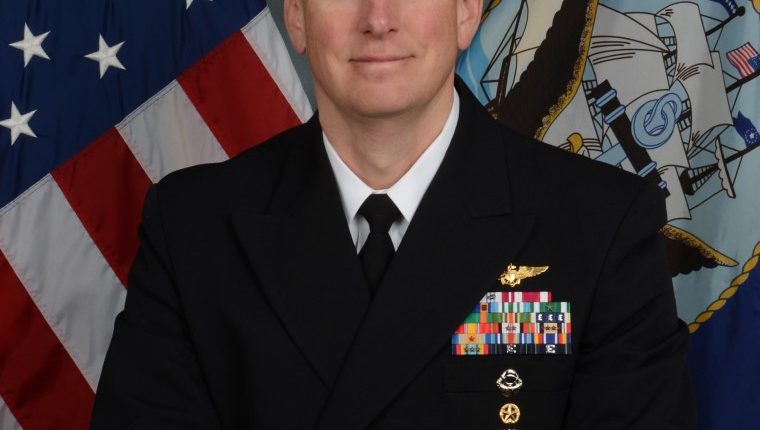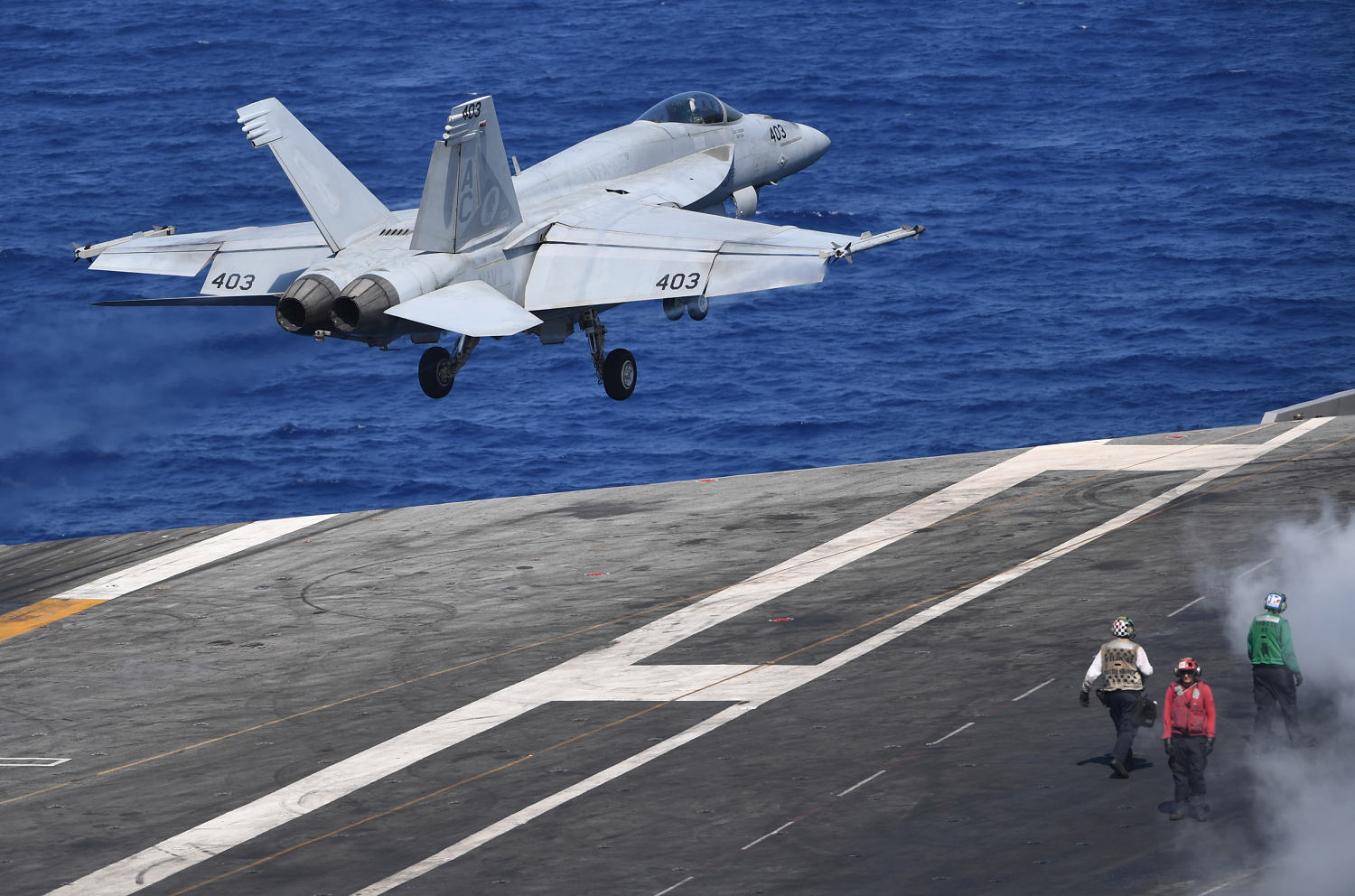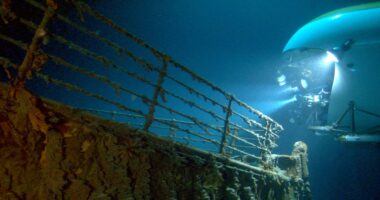ABOARD THE USS EISENHOWER in the Red Sea — For the pilots on board this nuclear-powered aircraft carrier, the effort to safeguard commercial shipping in the Red Sea requires them to adapt their high-tech training to an unexpected — and potentially vexing — new mission.
“We did not train to come to the South Red Sea and do what we are currently doing,” said Navy Lt. Cmdr. Travis Keating, an F/A-18 Super Hornet pilot. “When we first came out here, we had a lot of unknowns.”
Keating, who goes by the call sign “Sunshine,” struck an optimistic tone when asked about pilots’ daunting goal: locating and destroying hidden weapons depots in Houthi-controlled Yemen, a country famed for its rough mountainous terrain.
“We are able to adapt and flex to the mission sets as we are tasked,” said Keating, who is also a squadron training officer. “And that to me is probably the coolest thing that we’ve seen out here.”
On Saturday night, more than two dozen F/A-18 Super Hornet fighters and support aircraft flew off the Eisenhower to take part in a joint U.S.-U.K. mission to target Iranian-supplied ballistic missiles and drones that Houthi forces have used to strike 30 cargo ships in the Red Sea since Nov. 19. Along with the airstrikes, U.S. destroyers accompanying the carrier fired Tomahawk missiles at Houthi targets on shore.
NBC News is the only news organization embedded with U.S. naval forces in the Red Sea as they try to reduce Houthi strikes.
In all, the U.S. and the U.K. struck 36 Houthi targets in 13 locations in Yemen, U.S. officials said. Despite the U.S.-led airstrikes, Houthi militants in Yemen issued defiant statements Saturday and Sunday, vowing to keep up their attacks in the Red Sea until Israel halts its military campaign against Hamas in the Gaza Strip.
Navy Capt. Marvin Scott, commander of Carrier Air Wing Three, said in an interview that “we are constantly planning.”

“We plan for all sorts of contingencies as we develop military targets across Iranian-backed Houthi-controlled Yemen,” Scott said. “We are constantly looking at ways that we can provide options to our civilian leadership to degrade their capability.”
Scott, who has years of experience as a fighter pilot, said the airstrikes carried out Saturday in Yemen were effective. “Yes, I would call last night’s mission a success,” he said. “We destroyed all of the targets that we were attempting to strike.”
On one level, the mission of Keating, Scott and other American pilots is not new. For more than two decades, U.S. fighter jets operating from aircraft carriers in the Middle East carried out air raids against Islamic State group militants in Iraq and Syria, Saddam Hussein’s forces in Iraq and Taliban fighters in Afghanistan, as well as other missions.
In those case, the warplanes worked frequently with American troops or other partners on the ground to help identify targets. Keating and other pilots lack that type of support in Houthi-controlled parts of Yemen.
It remains unclear whether the stepped-up airstrikes will quell the Houthis’ attacks on commercial cargo vessels. Military analysts say the Houthis, who battled a Saudi-led coalition for years, are adept at withstanding air raids. Last year, the Saudis, unable to fully defeat the Houthis, agreed to peace talks.
Houthi attacks with Iranian-supplied missiles and drones have forced Maersk and other shipping companies to divert vessels to longer, costlier routes. About 12% of global shipping passes through the strategic waterway daily; and the strikes pose a growing threat to supply chains and could trigger a rise in consumer prices.
The U.S. pilots also have other tasks: to defend the Navy flotilla in the Red Sea from incoming Houthi anti-ship missiles or drones, come to the aid of commercial vessels under threat and fly over the area to demonstrate that the Red Sea is safe for civilian navigation.
“We will be airborne, and then, if tasked, we will shift our positioning to protect ships that are in distress if called upon,” Keating said. “Our presence is the important thing that reinforces that it’s safe to operate in the South Red Sea.”
Each mission can last one to six hours, officers said in interviews. The planning begins about 12 hours before takeoff, with the pilots meeting to outline their task. The pilots then meet with an intelligence team, reviewing possible threats and targets. Several hours beforehand, the pilots brief the air crew and then head out to their planes about an hour before lifting off the deck of the Eisenhower.
The Navy strike missions flown in recent days were the first combat experience for some junior officers on board the Eisenhower, but the pilots and air crews say they believe they are carrying out their mission successfully.

Navy Lt. Cmdr. Alex Morgan, a helicopter pilot and squadron maintenance officer, flew an MH-60 Sierra helicopter during Saturday night’s mission. His responsibility was to rescue any pilots whose aircraft were shot down. Helicopters, as a result, are the first craft to take off from the carrier and the last to return to it.
Armed with missiles, rockets, a cannon and guns mounted near the door, the helicopters are also sometimes launched to defend the carrier. At other times, they deliver supplies to ships.
“We are always poised to provide rescue regardless of the location or the adversary that might be around,” Morgan said.
Keating, asked whether he was frightened to take part in the combat flights, replied: “Nope, I would say there’s no fear. There’s just anxiety associated with the nervous energy to make sure that you don’t let this team down.”
With so much happening so fast, he said, the key was to focus on the immediate task at hand.
“There’s a lot of sights and sounds that will be etched in my brain forever for sure,” he said. “Seeing standard missiles being launched from ships, seeing missiles being launched from aircraft, seeing bombs being dropped from aircraft, the explosions associated with all of these things. You actually hear the sounds in the jet.”
When pilots return from strikes, they review the operations and refine their tactics for the next time, Keating said. And the planning cycle resumes.
“The most important part is you’ll come back, and you’ll debrief that event,” Keating said. “You’ll get lessons learned and ways forward in order to make sure that you continue to improve upon what you’re doing out here.”
Courtney Kube reported from the USS Eisenhower and Dan De Luce from Washington.
Source: | This article originally belongs to Nbcnews.com










